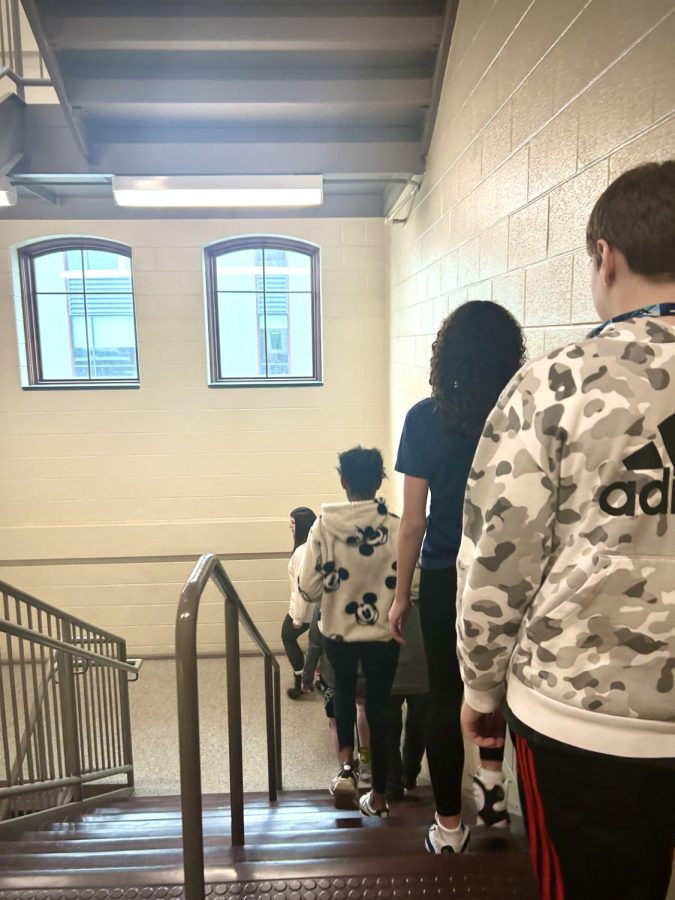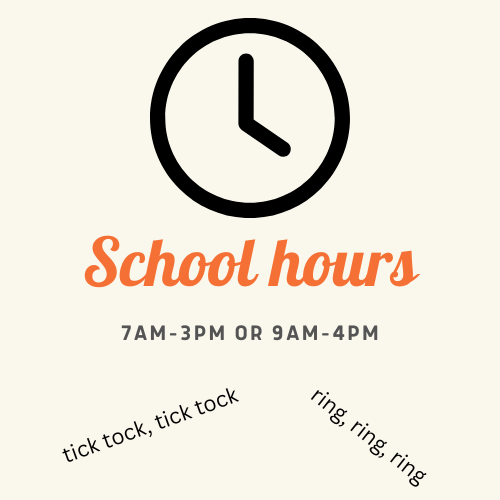Grade changes with lunch procedures
On the move. Seventh grade ELA teacher Lindsay Zerbee walks her class to lunch. Zerbee and her students complete this task daily.
Populated places can often result in the loss of privilege due to the mass number of people in an area. Now, someone might question what I mean by that, and the answer is simply that more people results in more problems.
Schools are a great example. Since so many students attend, there are bound to be a few that don’t follow rules. That so happens to be the case with our policy on walking to and from lunch.
I was surprised to find out that teachers were issued to walk their students to lunch this year. Filled with curiosity, I talked to sixth grade principal David Campbell.
“To begin with, it was just sixth grade, but when I talked to the head principal, Lori Mangan, about my plan she liked it,” Campbell said. “Mangan suggested, ‘you know what, we’re all going to do that.’ So that’s why we had all seventh and eighth grade teachers do it.”
Not only do teachers have to make four trips to drop off and pick up students, but they also have to lock their door every time they exit their classroom.
Along with teachers, this system affects students. Instead of walking to the cafeteria when the bell dismisses them, they are instructed to wait for their teachers to take them. Now, it’s cutting into social time in the hallways.
Aside from the new responsibility, this rule is helping out in other ways.
“A lot less things happen in the stairwell going up and down from lunch,” Campbell said.
Teachers are held responsible for their students’ location, so if students are in the stairwells when they’re supposed to be at lunch, it could put their teacher in an unwanted situation. As to students, this behavior isn’t a good influence for the new ones coming into the building. Now that sixth grade has been brought up to the junior high, extra precaution is a safe call.
“The goal was to make the school a much safer, more controlled environment,” said Campbell.
From previous years of being a student in the building, I have witnessed students struggle to follow rules. Some students would try to sneak off, so the choice was to walk them to lunch.
It is understandable why the district made the decision they did; however, there are also solutions that don’t include as much assistance. For instance, we have lunch monitors, so why not have hall monitors too?
These monitors could stand in and near stairwells just for the few minutes students scurry through the halls. They could secure the halls and make sure students are going where they need to be going. And teachers could stand outside of their classrooms and help stairwell monitors.
The rule is being enforced due to students’ decisions and whether or not they’re good ones, everyone is faced with decisions to make everyday. It’s up to the students to make a difference in the system, and school decisions are a good way to start.

Hello! My name is Vionna Jackson, and I am an eighth grade reporter. I look forward to working with the news writing staff this year and gaining experience....








ezrah • Feb 14, 2023 at 12:09 pm
GREAT FINDING VIONNA!!! cuzzo this is probably your best piece of media I have ever read. Both sides arguments are very justified and it is easy to be swayed. Great job